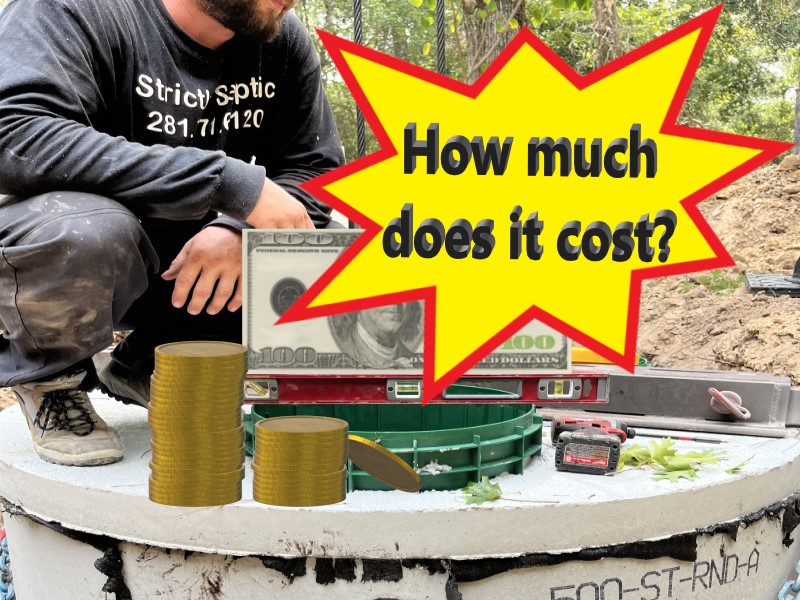Learn about septic system cost as septic systems are an essential part of modern living, providing an efficient and eco-friendly way to manage household wastewater. While many homes are connected to municipal sewer systems, others rely on septic systems to treat and dispose of their wastewater.
Understand Septic System Cost
If you are planning to install a septic system, it is important to understand the costs involved and what factors can impact the final price tag. There are also several things you can do to try and get down the price of a septic install while still getting a high quality septic system.
Septic system cost vary greatly
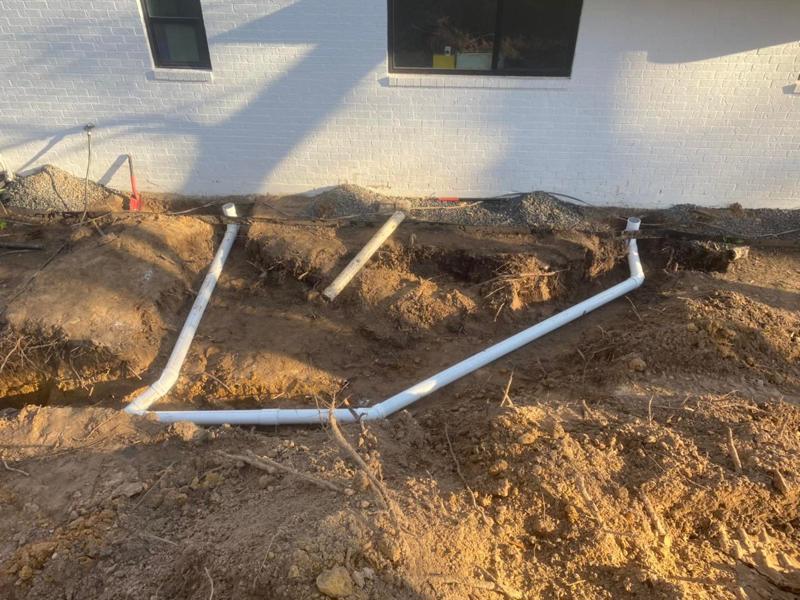
The cost of a septic system can vary widely depending on a number of factors, including the size of the tank, soil conditions, the location of the property, size of the property, type of septic system, maintenance requirements, permits and regulations, and labor costs. On average, homeowners can expect to pay between $5,000 and $15,000 for a basic septic system installation, but costs can quickly escalate if additional features or repairs are required.
Size of the septic tank
The size of the septic tank and drain field is the primary factor affecting the cost of a septic system. Larger tanks and drain fields require more materials and labor, which can significantly increase the overall cost. On average, a basic septic tank made of concrete or fiberglass can cost between $500 and $1,500 for a 1,000-gallon tank. However, larger tanks or those made of more durable materials like steel or polyethylene can cost up to $5,000 or more.
Drain field cost
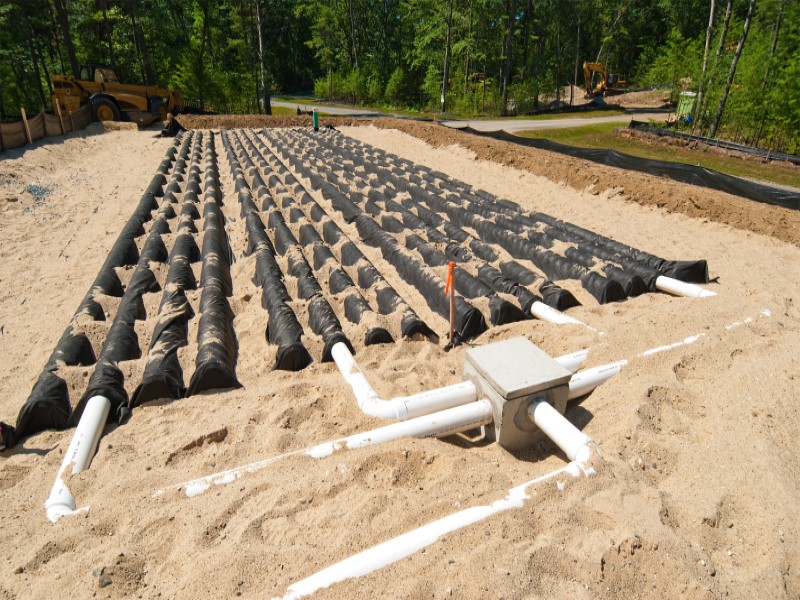
The drain field is the area where wastewater is distributed and treated by the soil. The cost of a drain field can vary widely depending on the size and type of soil. On average, homeowners can expect to pay between $3,000 and $7,000 for a standard drain field. However, if the soil is not suitable for a standard drain field, alternative systems like mound systems or sand filters may be required, which can add several thousand dollars to the overall cost.
Plumbing and electrical adds to septic system cost
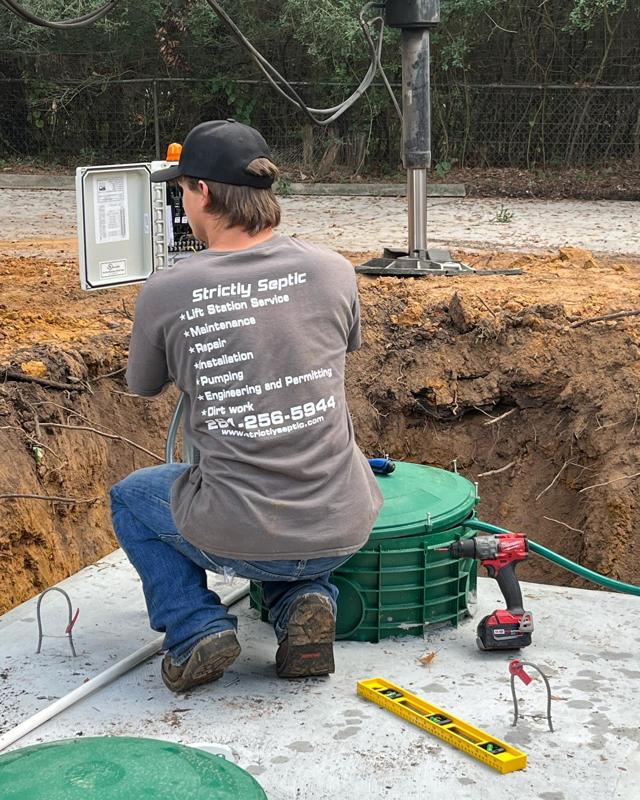
Once the septic tank and drain field are installed, plumbing and electrical work must be completed to connect the septic system to the home’s plumbing and electrical systems. This includes installing pipes, valves, and a control panel. On average, homeowners can expect to pay between $1,000 and $3,000 for plumbing and electrical work.
Soil conditions affect septic install cost
Furthermore, the soil conditions on a property can have a significant impact on the cost of a septic system. Some soil conditions, such as sandy soil or gravel, are ideal for septic systems as they allow for proper drainage and absorption of wastewater. Other soil conditions, such as clay soil or rock, can make it challenging to install a septic system, which can increase the cost of installation. If the soil conditions are not suitable, the property owner may need to invest in soil remediation, which can be an additional expense.
Location of property
Moreover, the location of a property can also affect the cost of a septic system. If the property is located in an area with challenging terrain, such as a steep slope or rocky terrain, the installation of a septic system can be more challenging, which can increase the cost of installation.
Additionally, if the property is located in an area with a high water table or close to a body of water, the septic system may need to be installed above ground, which can be more expensive.
Size of the property
Another factor that affects the cost of a septic system is the size of the property. One of the most significant factors that affect the cost of a septic system is the size of the property. Larger properties require larger septic systems, which means that the cost of the septic system will increase.
Septic system size determined by number of bedrooms, restrooms, water usage
The size of the septic system is determined by the number of bedrooms in the property and the estimated water usage. A property with more bedrooms and higher water usage will require a larger septic system, which will be more expensive.
Type of septic system used directly affects cost
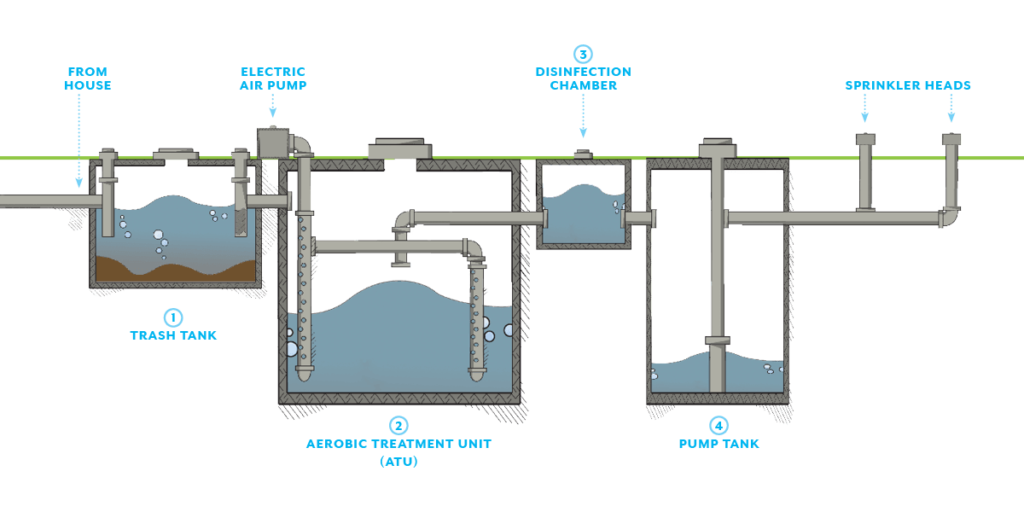
Furthermore, there are several types of septic systems available, and the type of system chosen can have a significant impact on the cost of installation. The most common types of septic systems include conventional septic systems, aerobic septic systems, and mound septic systems. Conventional septic systems are the most basic and least expensive type of septic system, while aerobic septic systems are more advanced and require additional equipment, which can increase the cost of installation.
Consider the on-going maintenance cost of a septic system type
Moreover, the maintenance requirements of a septic system can also affect the cost of installation. Some septic systems require more maintenance than others, which can increase the overall cost of ownership. For example, aerobic septic systems require regular maintenance and cleaning, which can be an additional expense for the property owner. Additionally, some types of septic systems may require regular pumping, which can also increase the cost of ownership.
Cost of septic system permits

Yet another factor that affects the cost of a septic system are permits and regulations. The installation of a septic system requires permits and must comply with local regulations. The cost of permits and compliance can vary depending on the location of the property and the type of septic system being installed. Some localities may require additional testing or inspections, which can increase the overall cost of installation.
Septic System Labor Cost
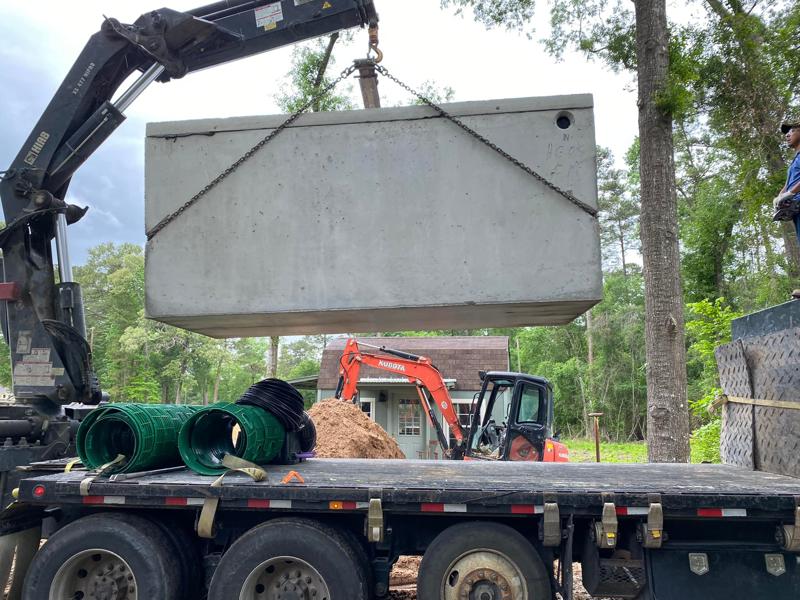
Finally, the cost of labor can also have a notable impact on the cost of a septic system. The labor costs associated with the installation of a septic system can vary depending on the location of the property, the complexity of the installation, and the experience of the contractor.
Property owners should research and compare the labor costs of different contractors to find the most cost-effective option. Even though septic systems are essential for homes that are not connected to a city or municipal sewer system, they can be expensive to install, especially if you are not familiar with the process.
Lower septic system cost in long-run with a quality septic system
Fortunately, there are several ways to save money on septic system installation while still getting a high caliber system. Here are some tips on how, as a homeowner, you can save money on septic system installation.
Plan ahead
First, one of the best ways to save money on septic system installation is to plan ahead. If you are building a new home or planning to install a new septic system, it’s best to plan the installation in advance. This will give you time to research different options, compare prices, and find a contractor who can provide quality service at a reasonable price. Additionally, planning ahead can help you avoid rush fees or unexpected expenses.
Get multiple quotes
Second, get multiple quotes. When it comes to septic system installation, it is important to get multiple quotes from different contractors. This will help you compare prices and find a contractor who can provide quality service at a reasonable price. Be sure to ask each contractor about their experience, references, and any guarantees they offer. It is also a good idea to ask for a breakdown of costs so you can see exactly what you are paying for.
Consider Alternative Septic Systems
Third, consider alternative septic systems. Traditional septic systems can be expensive to install and maintain. However, there are alternative systems that can be more affordable and efficient. For example, aeration systems use air to break down waste, reducing the need for pumping and maintenance. Furthermore, composting toilets can eliminate the need for a septic system altogether. Before you decide on a traditional septic system, consider alternative options and their costs.
Chose the right size septic system
Fourth, choose the right size. Choosing the right size septic system is important for both efficiency and cost savings. If you choose a system that is too small, you may need to have it pumped more frequently, increasing maintenance costs. Conversely, if you choose a system that is too large, you will pay more upfront for installation and may not see a significant return on investment. Be sure to consult with a professional to determine the appropriate size for your home and family.
Maintain your septic system
Fifth, maintain your system. Proper septic maintenance can help you save money on septic system installation in the long run. Regular pumping and inspections can help you identify and address problems before they become more serious and expensive to fix.
Avoid flushing non-biodegradable materials
Additionally, avoiding flushing non-biodegradable materials and minimizing water usage can reduce strain on your system and increase its lifespan.
Choose a reputable septic company like Strictly Septic Service!

Sixth, choose a reputable contractor. Choosing a reputable contractor is essential for ensuring that your septic system installation is done right the first time. Look for a contractor who is licensed, insured, and has experience installing septic systems. Moreover, be sure to ask for references and read reviews from previous clients to get a sense of their workmanship and professionalism.
Ask about incentives and discounts
Finally, take advantage of incentives. Depending on where you live, there may be incentives available to help you save money on septic system installation. For example, some states and municipalities offer grants, loans, or tax incentives for homeowners who install energy-efficient septic systems. Be sure to check with your local government to see if there are any programs available in your area.
Overall, septic system installation can be expensive, but there are several ways to save money while still getting a quality system. By planning ahead, getting multiple quotes, considering alternative systems, choosing the right size, maintaining your system, choosing a reputable contractor, and taking advantage of incentives, you can ensure that your septic system installation is done right and within budget. Explore more about septic systems from Texas Commission on Environmental Quality.
